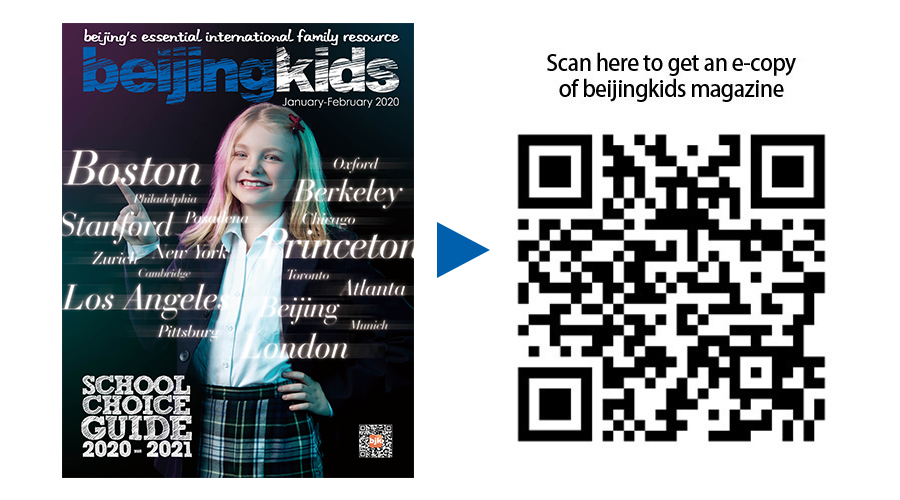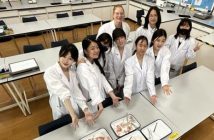Every year we have the distinct privilege of compiling a School Choice Guide (SCG) for our readers. This special issue of our magazine is not only a comprehensive look at the state of international education in Beijing, it also acts as a compendium to our annual Jing International School Expo (JISE), so that parents and students are equipped to make the most out of their visits with principals and staff at the event, and ultimately find the best school for their family.
Due to COVID-19, we were unfortunately forced to delay JISE, however, our 2020-2021 School Choice Guide is available and jam-packed with information! Now is the perfect time to familiarize yourself with everything from the various curricula followed at different institutions, to the ways in which schools ensure that all their students receive an equitable education, no matter their learning needs.
For now, check out our feature on scholarships and learn how your student can get a leg up in the competition. Then pop over to our School Profiles Index and find out which Beijing international schools offer these valuable awards.
It’s no secret that the one-size-fits-all model which has historically dominated educational institutions is increasingly contested as an equitable and sustainable pedagogical approach. Thanks to a litany of new studies, curriculum developers who are willing to take risks, a rapidly changing world in which rote memorization and conveyor belt academia no longer prepares kids for the future, and a general acceptance of diverse minds within any given student body, more and more professionals in the education sector are beginning to realize that if we truly want children to succeed, we have to work with them, instead of demanding that they work with us.
Part and parcel of this conversation is a much-needed paradigm shift in what it means to be a special needs learner. In fact, according to UNESCO, a special needs education is quite broadly defined as an, “Education designed to facilitate the learning of individuals who, for a wide variety of reasons, require additional support and adaptive pedagogical methods in order to participate and meet learning objectives in an educational program.” Furthermore, UNESCO defines reasons for being a special needs learner as including, but not limited to, “disadvantages in physical, behavioral, intellectual, emotional, and social capacities.”
So it should come as no surprise that Beijing’s international school community, which has a demonstrable track record in educational innovation and curriculum design, is also a hotbed for special needs advocacy and holistic approaches to inclusive pedagogical standards of care.
Of the 58 schools profiled in this year’s School Choice Guide, more than half of them offer extra help for students who need it. We spoke with two of them, 3e International School and The International School of Beijing (ISB), to get a better idea of what a special needs education looks like, and what resources are available for students who exhibit atypical learning styles.
 Dr. Ira Canada is a learning specialist at 3e International School. When asked about 3e’s approach to a special needs education, he stressed the importance of establishing a learning philosophy, stating, “We believe in providing access to standards-based learning through a multisensory and differentiated instructional approach, with the intention of unlocking the genius in all of our students. Teachers use a differentiated approach to instruction, and they understand a students’ needs and plan accordingly. We have a committed Learning Support Program which is designed to support the child, the teachers, and the family.”
Dr. Ira Canada is a learning specialist at 3e International School. When asked about 3e’s approach to a special needs education, he stressed the importance of establishing a learning philosophy, stating, “We believe in providing access to standards-based learning through a multisensory and differentiated instructional approach, with the intention of unlocking the genius in all of our students. Teachers use a differentiated approach to instruction, and they understand a students’ needs and plan accordingly. We have a committed Learning Support Program which is designed to support the child, the teachers, and the family.”
Likewise, ISB approaches learning through a collaborative process that focuses on understanding each student’s learning profile and personalizing instruction to match student needs. Students with learning disabilities are provided accommodations that offer access to their grade-level content and where necessary, a modified curriculum tailored to the student’s individual learning needs. The school uses a variety of assessment tools to better understand student learning and guide instruction, challenging each student at their individual level of achievement. For English language learners, the school implements a Sheltered Instruction Observation Protocol (SIOP) approach, with a focus on cultural proficiency, when teaching students English. English proficiency is monitored and assessed using the WIDA assessment tool, a widely used assessment tool in international schools around the world.
It is also important to note that, oftentimes, students suspected of being within the spectrum of special needs learners might actually be experiencing minor, adjustable issues that inhibit learning faculties, such as with language. As Dr. Canada points out, “We are mindful that often language needs and learning needs may actually manifest in similar ways. What may appear as a learning need, may actually come down to issues with language and communication.” As a result, 3e International School recently strengthened their Learning Support Program (LSP) to accommodate the diversity of its student body. Essentially, because the school serves students in a dual-language format, distinguishing communication deficits from specific learning needs is important. By focusing on these areas and installing language supports that encourage communication, the behaviors are extinguished and attention can be given to genuine educational needs.
When it comes to boots on the ground, so to speak, both ISB and 3e International School have an impressive roster of support staff.
At ISB, for instance, students have access to speech and language pathologists, counselors, learning support teachers and instructional assistants, as well as an on-site occupational therapist. However, this is just the beginning of a long-term strategy towards fully integrating students with special needs into campus life. In fact, by August, ISB will have introduced new initiatives for students diagnosed with intellectual and cognitive disabilities including global developmental delay, autism spectrum disorder, Down syndrome, fragile X syndrome, and cerebral palsy.
And at 3e International School, teachers regularly participate in trainings, the most recent of which focused on self-regulation skills. Similarly, future courses will address strategies for working with learners on the autism spectrum, and Universal Design for Learning (UDL).
As they say, it takes a village to raise a child, and thus the onus of care shouldn’t fall on educators and staff alone. In fact, schools like 3e are also examining ways to include parents in their long-term strategies. “Parents participate in monthly Tea Talks,” explains Dr. Canada. “These informative sessions give parents advice and strategies to deal with challenging situations as parents. Our first Tea Talk, ‘Positive Parenting Strategies’, provided parents with valuable advice to help them implement simple strategies to maximize the likelihood of challenging behavior situations.” This approach ensures that progress made by trained professionals working with special needs students in the school are further enforced, and ultimately enhanced, by parents at home.
The challenges of parenting are unlike any other that we face, a Sisyphean struggle that lasts well beyond your child’s maturation. Add to that a unique set of tribulations outside the purview of those which other parents encounter, and it’s enough to feel like you and your child are completely alone in the world. Nevertheless, thanks to folks like Dr. Canada and his colleagues at 3e International School, as well as the team at ISB, those who have dedicated themselves to the admirable task of understanding diagnoses which have been historically, and often severely, misunderstood,there is hope for families whose children live with disabilities, and those who fall within the ever-expanding spectrum of special needs learners.
 This article appeared in the beijingkids 2020 School Choice Guide
This article appeared in the beijingkids 2020 School Choice Guide




